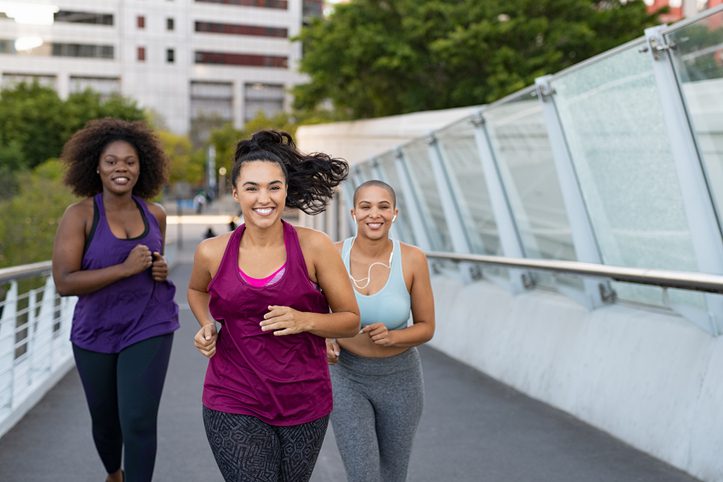Running does wonders for your legs, heart and even brain, but are those speed sessions damaging your skin? If you’ve ever come home from a run with a salty film on your face, an unexpected sunburn or a painful blister, you might wonder if all those miles are doing damage, and we’re here to help. More than 20 per cent of marathon runners report skin issues, and trail runners (who battle rugged terrain) are especially prone.

So, what are runners’ most common skin problems, and how can they prevent them? Researchers out of Poland recently conducted a scientific review, published in Quality of Sport, intended to reveal the most common and urgent skin issues in runners and provide suggestions on how to deal with them. Here’s how to keep that healthy post-run glow problem-free.

Use sun protection
If you’re pounding the pavement or trails under the sun, your skin takes a hit from UV radiation. According to the research, runners, especially marathoners, are at a higher risk for skin cancers, including melanoma and non-melanoma types. Surprisingly, distance runners report more lifetime sun exposure than surfers, despite usually running during off-peak sun hours. Sunburns are common, and runners younger than 45 are particularly prone.
So, what can you do? The solution is sun protection. Apply broad-spectrum sunscreen with at least SPF 30, wear UV-protective clothing and avoid running during peak sunlight hours. If you have lighter skin you’re especially at risk, so don’t skimp on the sunscreen. Unfortunately, studies show that many runners forget to reapply sunscreen during long training sessions, making consistent application crucial. If you sweat a lot, opt for water-resistant sunscreen, and remember that a hat, sunglasses, and UV-protective clothing can also make a big difference.

Is sweat a friend or foe?
Sweat is your body’s natural way of cooling down, and while it might seem harmless, it can actually irritate your skin. Sweat creates a moist environment that allows bacteria to thrive, potentially leading to clogged pores, acne or chafing. Studies show that intense exercise, especially in humid conditions, can lead to skin irritation and conditions like miliaria, or heat rash.
But sweat isn’t all bad—it also helps remove toxins from your skin’s surface. The key is to wash off sweat shortly after your run to prevent any lingering irritation.

Traumatic and environmental risks
Runners’ skin is exposed to all sorts of stress, from friction and environmental conditions to infections. The most common issues, like blisters and calluses, often appear on the feet. Most runners have experienced blisters, those fluid-filled pockets (often painful) that develop when the skin rubs against shoes or socks. Wearing moisture-wicking socks, using lubrication (chafing sticks or Vaseline) on friction spots and ensuring shoes fit snugly can help prevent these pesky problems.
Calluses, those thickened patches of skin, serve a purpose—protecting your feet from further damage. However, make sure you aren’t confusing them with warts, which may require a different treatment (get a health professional to have a look if you’re unsure). When you run, you expose your skin to bacteria, fungi and other pathogens, especially in sweaty areas like your feet. This can lead to athlete’s foot or fungal nail infections. Keeping your feet clean and dry, changing socks frequently and airing out your shoes between runs are easy ways to avoid these infections.
Running does wonders for your health, but it can also be tough on your skin. From UV exposure to pesky blisters, frequent runners face some unique challenges. But don’t worry—there are easy ways to keep your skin happy. Avoid peak sun hours, rock some sun-protective gear and don’t forget the water-resistant sunscreen. When it comes to blisters, a good pair of shoes and moisture-wicking socks are your best friends. By taking these simple steps, you’ll protect your skin, stay comfortable and keep crushing those miles.

